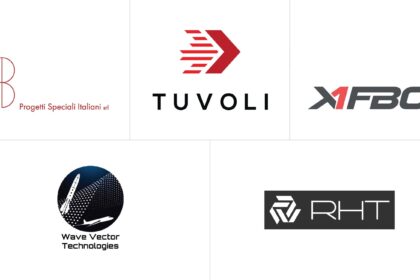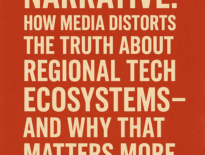
I’ve had the pleasure of getting to know Embry-Riddle Aeronautical University. This place is an economic engine dressed like a university, disguised as a think tank, wrapped in a space suit – right at the heart of the future of our economy and world. What Embry-Riddle is doing right now with a newly announced partners at the Research Park in Daytona Beach is how higher education should be catalyzing innovation ecosystems, fueling regional development, and directly injecting jet fuel into America’s tech economy.
The announcement of five new companies joining their Research Park is a decisive, structural investment in the type of collaboration that drives GDP, creates defensible jobs, and anchors industry in the U.S. And if you’re running a university, economic development agency, or startup support organization and not pushing this direction, you’re behind.
From Ivory Tower to Launch Pad: Embry-Riddle’s Research Park as an Economic Catalyst
Embry-Riddle has long been known for its dominance in aviation and aerospace education, but this move is a deliberate shift from education as output to innovation as infrastructure. The MicaPlex (the John Mica Engineering and Aerospace Innovation Complex) isn’t just a building; it’s the nucleus of a regional innovation ecosystem. Located on Florida’s Space Coast, already one of the most strategically important tech corridors in the country, it connects students, faculty, entrepreneurs, startups, and established industry players in a physical and intellectual network.
That’s the key: the density of collaboration. These aren’t passive tenants leasing office space – something I’ve pushed hard before for property developers and city planners to appreciate. They are co-developers in real-time R&D. Companies like PSI (Progetti Speciali Italiani), X-1FBO, Tuvoli, RH Technologies, and Wave Vector Technology represent a spectrum of innovation; spanning aerospace, aviation operations, FinTech, hypersonics, and wireless communications. The economic implication? It’s not just about job creation — it’s about strategic advantage.
Let me paint the broader picture: PSI is establishing a U.S. foothold because of proximity to Embry-Riddle and Florida’s aerospace workforce. X-1FBO is embedding its aviation operations platform within the talent pool it wants to hire from. Tuvoli’s CEO is a graduate leveraging his alma mater as an incubator for FinTech disruption. This is regional economic development done right: exportable innovation, inward investment, and local talent pipelines that don’t just feed industry, they shape it.
“In advancing our mission, we recognize the importance of a stronghold in the United States and understand the benefits of a strategic location near the space coast and in proximity to the world’s leading aerospace and aviation education and research institutions,” said PSI President Armando Orlandi.
Florida’s Quiet Revolution in Innovation
This move strengthens Florida’s hand in the broader innovation economy. While most still talk about Florida through the lens of beaches, retirees, and zero income tax, the state is becoming a dark horse in advanced tech, especially in aerospace, energy, space, and defense. Institutions like Embry-Riddle are the architects behind that repositioning. And because the Research Park also pulls in talent and partnerships across its campuses in Arizona and the Worldwide Campus network, the economic benefit isn’t constrained to Volusia County, it radiates nationally.
“While advancing aerospace communications technology,” said Wave Vector Technologies founder Dr. Eduardo Rojas. Rojas, an associate professor in the Department of Electrical Engineering and Computer Science on the Daytona Beach Campus, “the company is committed to providing Embry?Riddle students — renowned for their technical excellence — with opportunities to innovate and succeed in the space industry. Embry?Riddle’s support for our growth and advancement is unparalleled, and I look forward to continued collaboration with other like-minded companies at the Micaplex.”
Now, do NOT pretend every school is going to suddenly become Embry-Riddle and don’t explore transforming your city or University system into sectors it is not! What we have here is a case study in how Universities could apply their strengths more meaningfully in the regional economy and on behalf of the respective sectors of innovation. Most universities are still debating whether to allow vending machines with Apple Pay. But if you’re in higher ed leadership and want to actually create outcomes — not just talk about them in glossy brochures — pay attention.
Here’s what others can learn from Embry-Riddle:
- Don’t just lease space: curate ecosystems. The magic here isn’t just real estate. It’s that these companies complement each other and the university’s strategic strengths. That’s economic gardening, not just planting whatever shows up.
- Tie innovation to curriculum. Students aren’t just “getting exposure,” they’re part of the R&D, the workflow, the product development. That changes how we think about workforce readiness.
- Think like a startup studio. Embry-Riddle isn’t just hosting companies, it’s co-developing IP, accelerating go-to-market strategy, and helping create defensible companies.
- Create a flywheel of alumni engagement. Look at Tuvoli: led by an alumnus who’s now reinvesting in the school’s future. Want more alumni to give back? Give them a reason to come back.
And this is exactly where I help. In my backyard in Austin, this is something I’d love to see IC² or ATI reinforce through their tremendous impact. In my talks with legislators throughout the country, let’s explore how this is a playbook in how to steer the future of education.
If you’re leading a university or regional accelerator, and you actually want to generate impact like this —where startup formation and tech transfer aren’t buzzwords. Whether you need help designing an economic strategy, standing up an incubator, or crafting the type of partnerships that create long-term capital flows into your region, you need to have been on both sides of the table to turn vision into velocity.
“Our Research Park is designed to foster a technology-focused ecosystem, bridging the gap between university researchers and students, and the businesses, entrepreneurs and start-ups that drive innovation and economic development,” said Embry-Riddle Senior Vice President and Chief Operating Officer Rodney Cruise. “The addition of these pioneering new partners — both established and start-ups — at our facility is a win-win-win for the companies, the region and for Embry?Riddle Aeronautical University.”
Embry-Riddle isn’t just playing at the edge of innovation — it’s redrawing the map by reinforcing their expertise. And as other regions race to attract aerospace, energy, and AI ventures, the schools that follow this model will define not just the future of education, but the economic direction of their entire regions.
If you want to build that future with intention, start with what’s working. And then do it better.



Boom!!!
Austin lucky to have you!
Great to learn about this – a bold and focused approach.
Great article. We partner with X1-FBO and other Aviation operational applications to create a unified data and business processing system integrated in Oracle NetSuite. Let’s connect the Aviation industry for scale!
Innovative. Collaborative. Leading at a systems & social impact level! I can’t wait to learn more! Thank you for sharing.